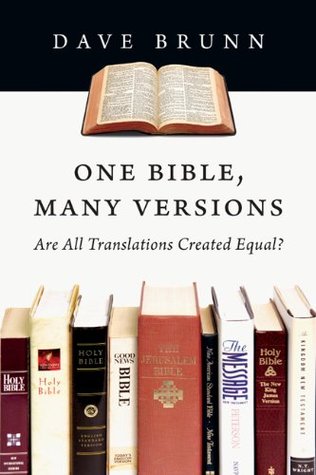Kindle Notes & Highlights
Rather than describing dissimilar Bible versions as mutually contradictory, I aim to demonstrate that they are often mutually complementary—even mutually dependent.
I believe that all four of these versions came up with excellent ways to translate this verse. But how can they all be excellent renderings when they are so different from each other? Isn’t there only one faithful and accurate way to translate each word, sentence and verse of Scripture? I do not believe there is. All four of the translations in this illustration help clarify the meaning of this verse—each from a different perspective. This blend of perspectives can work together like a microscope, a telescope and a wide-angle lens. These translations do not stand in opposition to one another.
...more
it is not humanly possible to create a single translation that is perfectly balanced in all respects. For that reason, I recommend that every serious student of the Word have and regularly use a variety of translations—some modified literal ones and some idiomatic ones. That is the surest way to find balance in our understanding of Scripture.
The Old and New Testaments in their original forms were no doubt very natural and easy to read. Was the readability and naturalness of those original texts inspired by God? Of course it was. There is no aspect of the original that is not inspired. Since naturalness and readability were divinely inspired, it seems appropriate for translators to try to reflect those features in their translations too. The evidence in our English versions shows that there are many places where the translators of every English version set aside the goal of reflecting the inspired words in order to reflect the
...more
When we hold the Scriptures in our hands, when we unfold its pages before our eyes, we need to remember that we are not just reading a book or studying a text. We are peering into the very heart of God.
First Corinthians 12:21 (NIV) says this: “The eye cannot say to the hand, ‘I don’t need you!’ And the head cannot say to the feet, ‘I don’t need you!’” In the same way, one Bible version should not say to another, “I don’t need you!” If we set any two English Bible versions side by side, we could easily find hundreds of instances where each version has the potential of strengthening and enhancing the other.
When we discuss the differences between Bible versions, we should avoid focusing on any of the translation practices included in this list, because every version uses them. Of course, some versions use them more often than others do. But the discussion cannot be about how often these practices are used by any particular version. These practices are either acceptable or unacceptable. If we make an issue out of the fact that some versions use them more often, that could be like saying, “I robbed only one bank, but that other guy robbed ten banks, so he’s guilty, and I’m innocent.”


